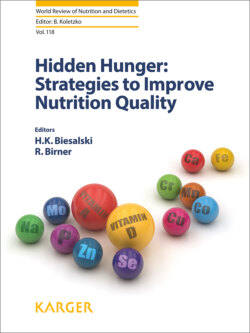Читать книгу Hidden Hunger: Strategies to Improve Nutrition Quality - Группа авторов - Страница 13
На сайте Литреса книга снята с продажи.
Economic Growth and Nutrition
ОглавлениеThe nutrition research and practitioners community tends to focus on identification and improvement of targeted interventions; and rightly so, because complex problems need complex solutions. Yet, broad based economic changes need consideration as well. The positive impact of economic growth on health and nutrition outcomes is shown in Table 1. Across the 3 income groups (measured by GDP per capita), countries with higher economic growth have shown bigger reductions in both stunting and child mortality compared to countries in the same group with lower growth. An only exception is in the middle-income group; here we find that countries with lower growth have been more successful in reducing the prevalence of stunting. Innovation or total factor productivity growth comes into play by driving economic growth, which then can lead to an enhanced nutrition of the population. Of course, nature of growth – inclusive rather than growth captured by the wealthy – and public spending facilitated by increased national income, may be the real forces that translate growth into improved health and nutrition. This is not captured by the broad-brush tabulation in Table 1.
As economic growth accelerated in the past decade in Africa and South Asia, we should expect nutritional improvement in that region. In fact, there has been substantial progress in reducing undernutrition since 2000. Global Hunger Index (GHI) scores for Sub-Saharan Africa and South Asia have decreased significantly. Africa south of the Sahara has achieved the largest absolute improvement since 2000, followed by South Asia also with a sizable reduction. Among the 10 most successful countries in reducing their GHI in absolute terms from 2000 to 2016 are 8 countries from Sub-Sahara Africa [1].
Not only growth, but also good governance is positively correlated with the reduction of undernutrition. Indicators for good governance1 plotted against the reduction in the GHI suggest that the nutritional status and prevalence of hunger benefit from a safe and accountable policy environment as well as responsible and corruption-free leadership.
Governance is not only a matter of governments, but given their global reach, multinational food companies have a powerful role to play alongside governments, international organizations, and civil society in reducing hunger and impaired nutrition. The Access to Nutrition Index is an independent benchmarking tool that measures companies’ contributions to good nutrition against international norms and standards. According to the Access to Nutrition Index report from 2016 [2], “companies have shown improvement since 2013 in:
•Assigning top-level managerial responsibility and oversight to undernutrition.
•Explicitly committing to tackling micronutrient deficiencies in developing countries through targeted fortification of products.
•Reporting on engagement with governments in developing countries on undernutrition.”
The report shows that the world’s top food and beverage companies have taken some steps towards improving consumers’ diets. However, many of the companies are still lagging behind and overall greater efforts are required.
Drawing partly on recent reviews [3, 4], key success factors for the political economy of nutrition are:
1 Three sets of factors shape enabling environments for nutrition: knowledge and evidence, politics and governance, and capacity and resources.
2 Leadership for nutrition is fundamentally important for results.
The private sector has substantial potential to contribute to improvements in nutrition, but there is scarcity of credible evidence and trust.
4 Operational research of delivery, implementation, and the scaling of interventions, and contextual analysis is essential.
Fig. 1. Instruments and actions for improved nutrition. Source: designed by author.
5 Systematic political economy analysis should be embedded with identification of potentially improved roles of stakeholders to avoid disappointments with public-private and NGO-private partnerships.
